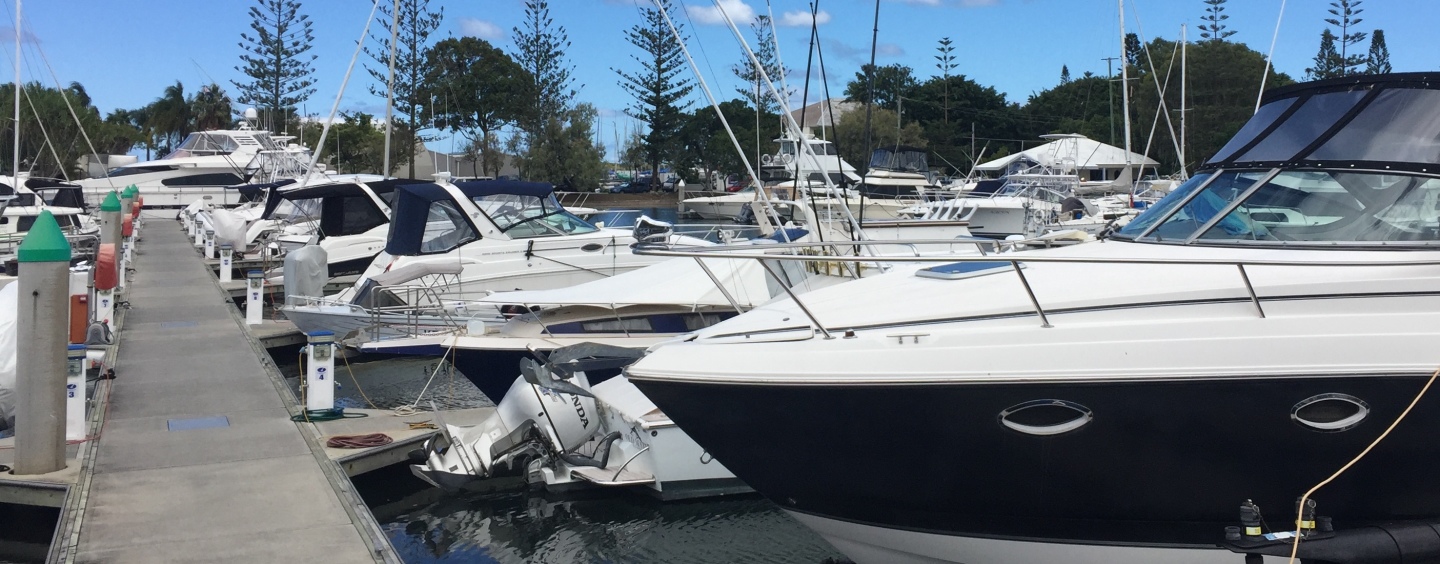Buying a boat can be both exciting and daunting, especially if it is your first one, and errors of judgement are often costly. Most brokers and private owners now require a deposit to be paid before they agree to a sea trial – or even an engine start at the dock – and in certain circumstances, they get to keep it even if the sale does not proceed. So how do you minimise the risk of making a deposit on an unworthy boat?
What to look for
The checklist below will equip you with a basic toolkit to conduct your own pre-deposit survey. Your objective is not to substitute yourself to a qualified surveyor, but simply to look for telltales that a boat has potentially serious mechanical or structural issues that would not be worth fixing, from a time or money standpoint, or both. In a nutshell, you are looking for deal-breakers in critical areas while it is still free of charge to walk away from the deal.
(As a guide, the Red marks indicate terminal defects, while Amber marks are warning signs.)
Preparation
What you can do or have access to will generally be fairly limited. But it is worth emailing the broker (or owner) ahead of your visit and require that the boat be “opened up” – that is, that panels and hatches giving access to the equipment and parts you want to inspect (including the bilges and engine room) are opened by the owner (or an authorized representative), particularly if this requires tools.
You should not use any tool yourself, or operate any electrical or mechanical equipment, including valves and seacocks. If anything breaks, the potential liability could be huge. Your only tools should be the Mark I eyeball, a torch, and maybe a mirror on a stick to inspect hidden areas. Your smartphone will also come in handy to take notes and pictures.
If you are denied access to certain areas, it is time to move on.
Engine
> The engine will be the single most expensive piece of equipment on board any sailboat or powerboat, so this is where your survey should start:
> If you smell fuel in the engine room, walk away (except if it’s gasoline; in which case, run!).
> Look for evidence of slack maintenance: corrosion (particularly on the oil and fuel filters), leaks (oil, saltwater, coolant, in the bilge or on the engine), black dust around belts, dirty air filters, and an absence of engine spares on board. All are signs of neglect, not just of the engine, but also most probably of the whole boat.
> Uneven discolouration of the engine paint may indicate previous severe overheating and is cause for serious concern.
> Inspect the fluids (coolant, oil and gearbox oil): any fluid below its minimum level indicates neglectful maintenance at best. Check for discolouration (orange tinge in the coolant, milky-greyish oil, or darkened gearbox oil) and presence of foreign matter (such as metal specks). Dab a few drops of engine oil on a paper towel; if it spreads widely with a clear ring around a darker centre, this may indicate fuel in the oil. All are signs a major rebuild might be just around the corner.
> Ask for the engine maintenance log. If there isn’t one, or you are refused access, you know what to do.
Electrical Installation
A close second after the engine in terms of its potential for expensive fixes (not to mention starting fires), the electrical system deserves a thorough inspection.
> Access permitting, look behind the electrical panel, and try tracing a few wires throughout the boat. The wiring should be secured and labeled, with a consistent colour-coding for the AC and the DC side, which should each have their own separate panels and monitors.
> The installation should be free of household items (wire nuts, screw connector strips and the like), which have no place in the marine environment –neither do automotive brands of batteries and charging devices.
> Crowded battery terminals, with more than a couple of connections each, indicate equipment that has probably been wired to bypass the DC panel breakers.
NOTE that all of the above can be signs the previous owner(s) was a DIY enthusiast and should ring alarm bells.
> Disconnect both ends of the shore power cord (shore-side first), and inspect the plugs and sockets for signs of arcing (blackened metal pins and burnt plastic) that indicate potentially serious issues and a fire hazard, as do signs of overheating, such as discolouration or deformation in any electrical wire insulation on board.
Hull and Topsides
> Check the topsides for hard spots (usually where the bulkheads join the inside of the hull) and flat spots (particularly around the chainplates on a sailboat). These can point to a compromised hull structure.
> Even minor differences in gelcoat (or paint) colour and shine may indicate repaired collision damage. Closely inspect internal structural elements on the opposite side for any deterioration.
Deck, fittings and rigging
> Water saturation and delamination of cored decks are very expensive and time-consuming to fix. Look for a continuous bead of sealant around the base of all deck fittings and fasteners, and signs of cracking.
> On a sailboat, inspect external chainplates. Any signs of fasteners corroding, deformation or elongation of the holes, or mis-alignment of a chainplate with upper rigging terminals, are cause for serious concern.
> Bounce around the deck on your tip-toes. If you feel any flexing, the structure of the deck may be compromised.With internal chainplates, inspect the penetration through the deck for moisture. Aging sealant cracks may trap standing water, which creates conditions for stainless steel’s nemesis, crevice corrosion, to set in, bringing with it the risk of a catastrophic rigging failure.
> Look over the mast for obvious cracks and deflections in the walls.
> Observe the position of the turnbuckles. If they are screwed to their ends and the rigging is still slack, this can be a sign the mast is slowly being driven through the bottom of the hull. Step off that boat before it’s too late!
Belowdecks
> Any fresh varnish, paint or solvent smells down below could indicate recent repairs and should be questioned. Rot, mold and damp smells signal fresh water leaks or excessive condensation. Check the headliner and around portholes. Deck leaks can be frustratingly time-consuming to trace and fix.
> A boat that smells too clean probably has darker sins to hide. Make sure to inspect the bilges for any stains, residual water or even pests.
> Inspect inside the cabinetry for signs of water damage, which can indicate anything from minor leaks to the aftermath of a sinking (particularly if horizontal water marks are present). Check floorboards for discolouration and delamination.
The following checks can assist you in determining structural aging of the hull, or a deformation following a grounding or collision.
> Scan the areas where the bulkheads join the hull and deck for any signs of movement (tabbing lifting) or repairs.
> Be on the lookout for doors that have been trimmed or seem out of alignment with their frame, uneven floorboards, and doors and drawers that are hard to open or close.
> On a sailboat, inspect the mast step closely for deflection or corrosion (or the compression post if the mast is deck-stepped).
Bilges
> There should be no plastic through-hull fittings and valves below the waterline, or gate valves on any saltwater intake. Treat any valve with a red or yellow painted handle with extreme suspicion. These are almost guaranteed not to be marine-grade bronze, and are going to need replacing at significant expense, as the boat will need to be hauled out.
> Observe the colour of the seacocks or valves and mounting flanges. A pinkish hue indicates de-zincification and requires prompt replacement.
> On an aluminium or steel boat, inspect as much of the interior surface of the hull as is accessible for corrosion and deformation. If the inside of the hull has been sprayed with expanding insulating foam and prevents a proper inspection, buyer beware!
> Have a look at a sailboat’s keel bolts if they are accessible and check for corrosion, cracks, leakage and absence or under-sizing of the shoulder washers under the nuts.
> Observe the hull timbers and the grid (or matrix liner) around the keel bolts for any deformation, cracks or evidence of repairs, which may indicate movement in the keel or grounding damage. If you spot any of the above, go home without regrets.
Final decision
Most of the amber defects above are not terminal when taken in isolation, but if more than a handful of them are present, it should be enough to make you look for a different boat – unless you are in the market for a fixer-upper and want to use these as bargaining chips in your price negotiation.
If in doubt, get a professional surveyor involved. Most surveyors provide consultancy services on an hourly basis and will be able to provide technical advice on any of your findings without the need to go through a full survey.
By Celine Flamain






























